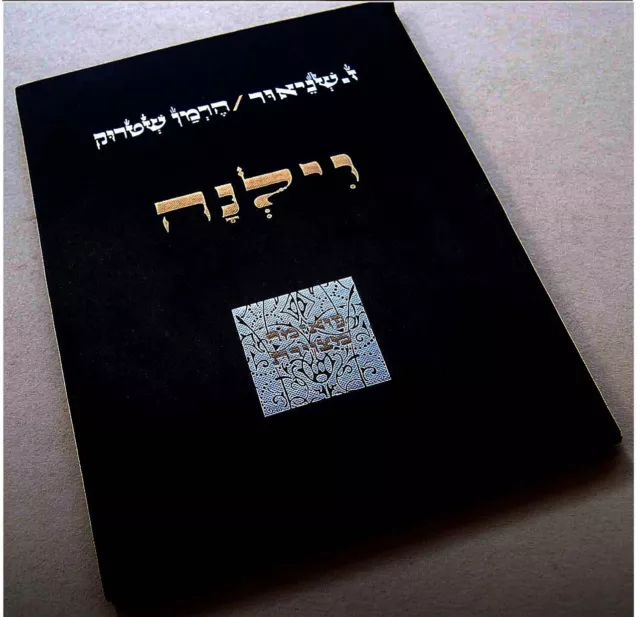1923 Jewish STRUCK ART BOOK Wilna LITHUANIA Lithographs JUDAICA Hebrew SHNEOUR
DESCRIPTION : Here for sale is a VERY RARE original 100 years old ( Published 1923 ) vintage copy of the RARE BOOK , A joint venture by two JEWISH GIANTS - The PAINTER - ARTIST - HERMAN STRUCK and the WRITER - POET - ZALMAN SHNEOUR . STRUCK has accompanied the SHNEOUR poem "VILNA" ( Also WILNA, WILNO , VILNIUS ) in LITA ( Also LITE, LITHUANIA ) by TEN ORIGINAL LITHOGRAPHS which depict WILNA and its TYPES. Additional SMALL VIGNETTES in B&W and RED. They named their joint ARTISTIC CREATION - "WILNA - An ILLUSTRATED POEM" . It was published in a LIMITED and NUMBERED edition of only 1700 numbered copies. The first 50 copies were especialy luxurious and signed by STRUCK. This copy is number 953. a VERY LUXURIOUS EDITION - Printed and bound as issued on one face only of quality paper. Special illustrated CLOTH HC. Illustration and headings in embossed GOLD and SILVER both on FRONT and BACK covers. 8 x 10" . 34 pp on separate leaves as issued. TEN original lithographs ( Some are signed in the plate ). This very nicely preserved copy is EXCELLET codition for its age. EXCELLENT CONDITION in and out . Tightly bound. Entirely clean Hardly used- If at all. Tears in spine ( The only imperfection in this FINE COPY ) were very professionaly mended. ( Pls look at scan for accurate AS IS images ) .Will be sent inside a protective rigid envelope .
AUTHENTICITY : This is the ORIGINAL vintage 1923 FIRST and ONLY edition ART-POETRY book ( Dated ), NOT a recent edition or a reprint , It comes with life long GUARANTEE for its AUTHENTICITY and ORIGINALITY.
PAYMENTS : Payment method accepted : Paypal & All credit cards. SHIPPMENT : SHIPP worldwide via registered airmail $ 29 . Book will be sent inside a protective packaging . Handling around 5-10 days after payment. Zalman Shneour (born Shneur Zalkind; 1887 – 20 February 1959) was a prolific Yiddish and Hebrew poet and writer. He was nominated for the Nobel Prize in Literature.[1] Contents 1 Biography 1.1 Translations into English 2 Awards 3 See also 4 References Biography Shneour was born in Shklov (Škłoŭ) in Belarus (then part of the Russian Empire) in 1887. His parents were Isaac Zalkind and Feiga Sussman. At age 13, he left for Odessa, the center of literature and Zionism during this time. Shneour moved to Warsaw in 1902, and was hired by a successful publishing house. He then moved to Vilnius in 1904, where he began to publish his first book and a collection of stories. These poems were extremely successful, and many editions were published. In 1907, Shneour moved to Paris to study Natural Sciences, Philosophy, and Literature, at the Sorbonne. He traveled throughout Europe from 1908 to 1913, and even visited North Africa. At the start of World War I, Shneour was in Berlin. During the years of the war, he worked in a hospital and studied at the University of Berlin. Shneour returned to Paris in 1923. He stayed there until 1940, when Hitler's troops invaded France. Shneour then fled to Spain, and from there he went to New York City in 1941. He died in 1959 in New York.[2] He is remembered among lovers of Yiddish songs for his expression of longing and lust, “Tra-la-la-la,” known as Margaritkelekh, Daisies. Artists such as Chava Alberstein have recorded it. Shneour had two children: the American neurochemist and biophysicist Elie A. Shneour, and Renée Rebecca, who became the Spanish dancer Laura Toledo. Translations into English Song of the Dnieper, translated by Joseph Leftwich. Roy Publishers: New York, 1945. Restless spirit: Selected Writings of Zalman Shneour, translated by Moshe Spiegel. Thomas Yoseloff: New York, 1963. A Death: Notes of a Suicide, translated by Daniel Kennedy. Wakefield Press: Cambridge, 2019. ISBN 9781939663450. ***** Shneour, Zalman ContentsHide Suggested Reading Author (1886–1959), Hebrew and Yiddish poet and novelist. A scion of the Shneerson dynasty that has led the Lubavitch Hasidic movement since its inception, Zalman (Zalkind) Shneour was born to a middle-class, somewhat traditional family in the Belorussian town of Shklov, a center of Jewish learning, of Lubavitch Hasidism, and of the Haskalah. His childhood (which he colorfully evoked in his novella cycle Shklover yidn [Jews of Shklov; 1929]) was not a happy one. A recipient of a traditional heder education with the addition of some tutoring in modern secular studies (including Russian and modern Hebrew), Shneour became, from a very early age, an avid reader of Hebrew literature. This was definitely not encouraged by his parents, who wished to see him turn his attention to a practical career in commerce. When Shneour was 12, his father took him to Warsaw for Naḥum Sokolow, editor of the daily newspaper Ha-Tsefirah, to decide whether it was realistic to allow Shneour to indulge in writing. The meeting with Sokolow went badly, and the father and son returned home, each more determined than ever to oppose the will of the other. More than a year later, young Shneour abandoned his home and went to Odessa, then the capital of Zionist and Hebrew literary activity. He was received with warmth and compassion by Ḥayim Naḥman Bialik, who became the benevolent father figure in Shneour’s life. In 1902, Shneour left for Warsaw and found work in the editorial office of the Hebrew children’s weekly ‘Olam katan, in which his first poems for children were printed. In that same year, he published his first “adult” Hebrew and Yiddish poems in different Warsaw publications. In 1904, he moved to Vilna, where he worked for the Hebrew periodical Ha-Zeman (in which he published poems and prose, including his first extended novella, Mavet [Death], written in the form of the diary of a suicide). Falling in love with the old town (which he was later to commemorate in a famous ode) and its young women, he spent the happiest two years of his youth there, at the end of which time he was already a well-known member of the Hebrew poetic “Pleiade” (the group of young poets influenced by Bialik). In 1906, his first collection of Hebrew poems, ‘Im sheki‘at ha-ḥamah (At Sunset), was published by Tushiyah, then a bustling publishing house that monopolized contemporary “young” Hebrew writing. The book, generally well received, elicited the highest public praise from Bialik, ensuring Shneour’s poetic status as the most prominent and promising poet among his contemporaries. From La-Sevivon (To the Dreydl), by Zalman Shneour (Frankfurt, Moscow, Odessa: Omanut, 1922). Illustration by Ḥavurat Tsayarim be-Odes (Group of Artists in Odessa). This Hebrew children's book was prepared in Odessa in 1918-1921, but issued in Frankfurt a year later, after the repression of Hebrew culture in the Soviet Union made its publication there impossible. It is believed to have been illustrated by one or more members of a group of four students from the Odessa Art Academy, who may have needed to remain anonymous for fear of persecution. (Gross Family Collection) Emboldened, Shneour decided to leave Eastern Europe to acquire a modern literary and scientific education in Western universities. He intermittently studied literature, philosophy, and natural sciences in Switzerland (Bern and Geneva) and in Paris. At the same time, he constantly enlarged the conceptual and generic format of his poetry. If before 1906 he had written mainly relatively short lyrical poems of mood and landscape, now he invested himself in comprehensive cycles of poems and particularly in extensive rhapsodic sequences in which mood and landscape form a backdrop for philosophical rumination (evincing the poet’s penchant for somewhat popularized Nietzschean and vitalist concepts) as well as for lengthy rhetorical arguments. Shneour’s poem “‘Im tselile ha-mandolina” (To the Sound of the Mandolin; 1912), offering a Nietzschean view of the nihilist cultural present (“God’s demise”) as well as of the tragic Jewish exilic state, was enthusiastically received as a masterpiece. Similarly celebrated was the vast symbolist sequence Be-Harim (In the Mountains; 1908–1913), a philosophical quest poem of a poet wanderer who seeks the meaning of life and art in the Swiss Alps. Shneour worked for five years on this lyrical epic, the completion of which made possible the publication of a major collection of poems, originally under the title Shirim u-fo’emot (Lyrical and Narrative Poems; 1914), but subsequently better known by the title Gesharim (Bridges). The publication in 1913 of the poem “Yeme ha-benayim mitkarvim” (The Dark Ages Draw Nigh), a rhetorical tour de force in which the poet prophesied, against the background of the Beilis blood libel trial, the approaching rebrutalization of European civilization and reemergence of a visceral, “medieval” antisemitism, enhanced Shneour’s poetic stature by adding to his other qualities that of a prophet, a trait that the Bialikian poet–prophet model demanded from a Hebrew poet of genius. During the decade before World War I, Shneour was also prolific as the author of Hebrew and Yiddish psychological and naturalistic prose fiction. He also wrote and published Yiddish poems (among them the well-known “Margaritkelekh” [Little Daisies], which gained wide popularity as a folk song). When World War I broke out, Shneour was in Berlin, studying medicine. Carrying a Russian passport, he was now subject to many restrictions. He was forced to discontinue his studies and suffered hardships until he managed (in 1919) to leave Germany (via Copenhagen) and reach the United States. His ties with American and European Yiddish newspapers restored, Shneour went back to Germany, but after giving up on medicine, he joined the Russian Jewish businessman and cultural entrepreneur Shelomoh Zaltsman in establishing a Hebrew publishing house. The enterprise then published his collected Hebrew writings from the years 1900 to 1923 in three deluxe volumes: Gesharim (1922; a new edition of the 1914 poetry collection), Ba-Metsar (In Extremis; 1923; prose fiction), and Ḥezyonot (Visions; 1924)—the latter an extensive collection of poetry from the years 1913–1923, including well-known poems such as “Yeme ha-benayim mitkarvim,” “Vilna,” “Spartacus,” and the rhetorical pièce de résistance “Mi-Shire ha-goral” (Poems of Destiny), perhaps Shneour’s most incisive exploration of the fate of the artist as a Nietzschean superman. This new collection of poems was hailed by the established critics as representing a fully mature poet. However, Shneour’s role as a major Hebrew literary figure was, at this point, all but played out. He felt the antagonism of a young literary generation even before he attempted in 1925 to find a place for himself and his family in Palestine. Yet there, he was bitterly disappointed with his reception and with the offers the local literary establishment and Zionist officialdom could make in order to facilitate his settling down in Tel Aviv. He returned to Paris, to where he had moved from Berlin a year earlier, and made France his home for 17 years. The change in his literary career manifested itself in a dual shift of emphasis: from Hebrew to Yiddish and from poetry to prose fiction. Outwardly, this did not involve a drastic reconstruction of the author’s literary personality, since Shneour had from the onset of his career written much fiction in both languages. Also, he would continue writing Hebrew poetry (indeed, a third major collection appeared in Tel Aviv in 1933, titled Pirke ya‘ar [Forest Chapters]; it included the author’s best lyrical poems) as well as rewriting in Hebrew some of his major Yiddish novels. However, the implications of the dual shift were far-reaching. From Zalman Shneour in Warsaw to Abraham Cahan in New York, 28 November 1928. Shneour and his wife and child are visiting her father, and therefore he apologizes for delays this may cause in his delivery of installments of stories that Cahan is publishing serially in the American Yiddish newspaper Forverts: "The Polish post is not as punctual as the French post." He complains that Cahan's refusal to allow the Canadian Yiddish newspaper Der keneder odler to reprint his work has deprived him of income, and he wants Cahan to get the Forverts to make it up to him with a bigger monthly fee for the "4 novels that I have printed week in and week out." He notes that booksellers from all over Europe and America have written to him asking him to publish the novels in book form. Based on this, he is sure that a print run of 5,000–6,000 would sell out, at least 2,000 in Warsaw alone. He knows that the Forverts doesn't publish books but he wonders if they might make an exception this time. He awaits the next volume of Cahan's published memoirs and compares the latter favorably to a memoir by Shmerl Levin that he has recently read. He also alludes to the fact that Cahan is a "martyr" who has put aside his fiction writing for the good of "his party." Yiddish. Hebrew letterhead: Z. Shneour. RG 1139, Abraham Cahan Papers, F135. (YIVO) In Paris in the summer of 1927, Shneour met with Abe Cahan, the dictatorial editor of the Forverts, the most widely circulated Yiddish newspaper in America. Cahan insisted on publishing (in weekly installments) artistic fiction of quality and was able to pay handsome salaries to writers whose narrative art appealed to him and at the same time was accessible to a wide readership. Shneour presented him with a series of brilliantly written tales and vignettes focusing on the life of a middle-class Jewish family in Shklov of the 1890s—a slightly camouflaged sequence of autobiographical pieces. Cahan’s reaction was enthusiastic. Not only were the stories poignant, funny, and well crafted, but they also responded to a growing cultural need, on the part of the already acculturated and relatively secure Jewish immigrants in the West, to look “homeward” to their native East European towns and hamlets, now changed and unreachable because of wars and revolutions, with bittersweet nostalgia. The success of the Shklov sequence, as it was published in weekly installments for almost a year in the Forverts (as well as in Moment, the popular Warsaw newspaper), was spectacular. Readers of the newspapers read the installments to their families as part of Sabbath relaxation. The author, who also published the stories in two volumes, Shklover yidn (1929) and Feter Zhome (Uncle Zhome; 1930; both texts went into many editions), became the most popular Yiddish fiction writer (alongside Sholem Asch) of the time, and could afford a high standard of living in his elegant villa near Paris. More important, he discovered that the impressions of life in the hometown he had left with no regret as a teenager came back now, engulfing his memory and releasing in him an unprecedented creative energy. He turned from the constrained world of middle-class Shklov to the simpler and more emotionally dynamic of one of the town’s ameratsim (ignoramuses), artisans, and workers, people of great appetites and much physical prowess and courage, and produced a vast epic with the figure of the brave teamster Noyekh Pandre at its center (Noyekh Pandre was eventually published in five volumes; 1938–1939). From there Shneour turned to Shklov, Saint Petersburg, and Paris of the beginning of the nineteenth century in an extensive, intricately plotted historical novel (Keyser un rebe [Emperor and Rabbi], with a book-form edition in five volumes; 1944–1952), in which he attempted to bring together the history of the nascent Lubavitch Hasidic movement and its founder, Reb Shneur Zalman of Liady, the career of Napoleon from soldier of the French Revolution to France’s emperor, and the secret incestuous history of a respected family of Jewish Shklov’s upper crust. More Shklov-centered novels, such as Der mamzer (The Bastard; 1957) followed. In essence, Shneour dedicated the three last decades of his life to a growing cycle of Shklov epics that absorbed the best part of his literary energy, although he also kept writing poetry in both Yiddish and Hebrew. World War II trapped Shneour and his family in occupied France. After more than a year in hiding, they managed to slip out of the country, arriving in New York in 1941. Thanks to his ties with the Forverts, the writer managed to settle down in relative comfort, continuing the interrupted publication of his Yiddish fiction. He stayed in the United States until the early 1950s when he decided to relocate to Israel, which he had visited in 1949. He lived there intermittently throughout the last decade of his life. Greatly inspired by Israel’s triumphs, Shneour nevertheless experienced much disillusionment and disappointment, facing an Israeli culture with readers and a literary establishment that had little use for him. He prepared a 10-volume edition of his Hebrew works, issued between 1957 and 1960. He died in New York in 1959. A year later, his remains were buried in Tel Aviv not far from those of Bialik and Sha’ul Tchernichowsky. A street was named after Shneour in the city by which, for much of his life, he had felt rejected. Historically, Shneour’s contribution to the growth of post-Bialikian Hebrew poetry during the first two decades of the twentieth century consists of his contributions to the following three developments. The first was the refashioning of the genre of the poema, a very central genre in Hebrew poetry that Shneour wrenched out of its linear narrative matrix and, in the spirit of the then-current symbolism, reconstructed as a vast lyrical flow of fantasy, description, philosophical cogitation, and rhetorical harangue—all held together by theme, rhythm, and musical pattern rather than by a story line. The second development was prosodic and stylistic. The third was thematic and ideational. Shneour extracted from the “spirit” of the so-called Hebrew national renaissance the instinctual and libidinous principles that were inherent in it and took them as far as the culture of his time would allow. His was a rebellious poetry in which intellectualism and raw instinct went hand in hand in their opposition to sentimentalism and bourgeois decorum. This often led Shneour to a combination of sensuous indulgence and intellectual pessimism that was informed by the tenets of European decadence. On another level, if we seek in the author’s legacy those parts that are still fully alive as literary texts, we have to turn from most of his Hebrew poetry to his Yiddish prose fiction (large parts of which Shneour brilliantly rewrote in Hebrew). Here he was not an innovator, but rather a talented continuer who further developed the narrative art of the klasiker, particularly that of Abramovitsh and Sholem Aleichem. While he learned from the former the art of detailed and meticulous realistic description of society and behavior, he absorbed from the latter the spirit of humorous conversation or causerie of a commentator who observed life from a comic vantage point. However, Shneour’s prose is not merely derivative. Shklover yidn is a complex masterpiece disguised as a sequence of innocent comic shtetl idylls. Outwardly static and replete with descriptive ethnographic detail, it seethes within with the bitter alienation of a boyhood in a restrictive society, with rebellious critique of the Jewish traditional family, with vicissitudes of a difficult puberty, and with a welter of negative emotions and childish libido gone wild. It contains all of the author’s sensuality and search for intellectual freedom, but presents them not as the musings of a Jewish Zarathustra, but rather as the very poignant and, indeed, tragic yearnings of a lively boy who was never given the paternal love he needed for developing a more harmonious personality. A good part of Shneour’s Hebrew works were collected in the 10-volume edition prepared before his death and published between 1957 and 1960. The Yiddish works have not been collected. Many of them were never published in book form and are to be found only in their original publications in the newspapers of the 1930s and the 1940s. Of either the Hebrew or the Yiddish works, only a few appeared in English translation, notably in Restless Spirit, edited and mostly translated by Moshe Spiegel (1963). It contains a selection of chapters from Shklover yidn and other Yiddish works, as well a dozen Hebrew poems. **** Hermann Struck (6 March 1876 – 11 January 1944) was a German Jewish artist known for his etchings.[1] Contents 1 Biography 2 Collections 2.1 Struck Museum 2.2 Other institutions 3 Selected works 4 See also 5 References 6 External links Biography Hermann Struck, 1916 Hermann Struck (Chaim Aaron ben David) was born in Berlin. He studied at the Berlin Academy of Fine Arts. In 1904, he joined the modern art movement known as the Berlin Secession.[1] In 1900, Struck met Jozef Israëls, a Dutch artist, who became his mentor. Both were recognized as leading artists of their time.[2] In 1908, Struck published "Die Kunst des Radierens" ("The Art of Etching"), which became a seminal work on the subject.[2] It was a textbook that offered both theory and practical instruction.[3] Struck's students included Marc Chagall, Lovis Corinth, Jacob Steinhardt, Lesser Ury and Max Liebermann.[2] In 1899, upon completing his studies at the Berlin Academy, he was banned from teaching there because he was Jewish. He signed his work with his Hebrew name, Chaim Aaron ben David, and a Star of David.[2][dubious – discuss] Struck did commission portraits of Ibsen, Nietzsche, Freud, Albert Einstein, Herzl, Oscar Wilde and other leading figures of the time.[2] Hermann Struck Museum, Haifa Struck was a fervent Zionist and Jewish activist. He visited the Land of Israel in 1903, displayed his art at the Fifth Zionist Congress, and was a founder of the Mizrachi Religious Zionist movement. At the same time, he was a German patriot and volunteered for military service in World War I[2] serving as a translator, liaison officer and military artist.[2] He was awarded the Iron Cross 1st Class and promoted to an officer for bravery, in 1917 he became the referent for Jewish affairs at the German Eastern Front High Command[4] Struck immigrated to Palestine in 1922, taught at Bezalel Academy and helped establish the Tel Aviv Museum of Art.[2] He visited Berlin every summer until the Nazis rose to power.[2] He died in Haifa. Collections Struck Museum Struck's home in Haifa has been open as the Hermann Struck Museum since 2013.[5][6] ***** Hermann Struck: Spirit and Matter Berlin-born Hermann Struck (1876-1944) is considered one of the leading print artists in Germany and Eretz Israel in the first half of the twentieth century. He was born into a prosperous, observant Jewish family who were members of the Adath Israel congregation. This congregation upheld traditional religious values, while promoting an openness to modernity. Struck was thus given a traditional Jewish upbringing, while also enabling him to attend university, and to develop his artistic talent. The synthesis between his religious identity and engagement with art became integral to both his spiritual world and his artistry. Struck studied at the Academy of Arts in Berlin between 1895 and 1899. The academic training he received influenced his outlook and his decision to specialize in the graphic arts. Along with his abundant artistic activity, Struck took an active part in public life and was a well-known figure in Berlin’s social circles. He was among the founders of the HaMizrachi religious Zionist movement and participated in the Zionist congresses. With the outbreak of World War I, Struck volunteered to serve in the German army. In 1922 he settled in Eretz Israel where he continued his artistic and public activities. In 1925, Struck moved to this very building, his new home situated on Arlozorov Street in the Hadar HaCarmel neighborhood in Haifa. This three-story house was designed by the architect Alexander Baerwald – one of the leading architects active in the Jewish-Zionist community at the time. This unique, eclectic building combines Eastern and European element. It is here that Struck recreated his Berlin studio, creating prints while teaching art and printmaking. **** Hermann Struck, painter and engraver, was born into a wealthy Orthodox Jewish family in Berlin. He was introduced to the art of etching, at which he excelled, by Hans Meyer at the Berlin Academy of Art and it soon became his favorite technique. In 1900, Struck traveled to Holland, where he studied with Jozef Israels. He became a Zionist at an early age, was one of the founders of "Hamizrachi" movement, and was active in the Zionist movement throughout his life. His early works are signed by his Hebrew name, Haim Aharon ben David. Struck was not only a master of his craft, but an excellent teacher as well. Among his students were Marc Chagall, Max Liebermann, Jozef Israels, and Lovis Corinth, all, except for Chagall, by far his seniors. In 1908, he published a textbook, Die Kunst des Radierens (The Art of Etching), which provided both theory and practical instruction. The book was in great demand and stimulated the art of etching among both professional and amateur artists. During World War I, Struck served as a German army liaison officer to the Jewish communities of Lithuania and Belorussia and in 1919 was attached to the German delegation to the Versailles Peace Conference as an advisor on Jewish affairs. In 1922, he moved to Palestine and settled in Haifa, where he worked mostly in etching. **** WILNA: By: Herman Rosenthal, Baer Ratner, Joseph Jacobs Table of Contents Earliest settlement. Early Records. In the Seventeenth Century. Calamity of 1655. The Eighteenth Century. Rabbis. Communal Institutions. —Typography: Earliest settlement. Ancient Lithuanian city, capital of the district of the same name; situated on the rivers Vilia and Vileika, about 200 miles southeast from Libau on the Baltic, and 436 miles southwest from St. Petersburg. A Jewish settlement existed there in the fourteenth century. The writer Narbutt, in his history of Wilna, states that as early as the reign of the Lithuanian chief Gedimin (1316-41) there was a large Jewish community in the place, and that the space occupied by the streets inhabited by Jews was about one-fifth of the area of the whole city. From fully reliable data accessible to him, Narbutt even specified the names of the streets then inhabited by Jews. The historian Bialinsky writes that under the reign of Olgerd (1345-1377) the Jewish community of Wilna was considerable. This opinion is expressed also by the writers Krashewsky, Kraushaar, Scherewsky (in his book upon the Jewish records of the city of Wilna), and Vassilievsky. The, last-named historian claims that at the end of the sixteenth century the Jewish community of Wilna numbered from 10,000 to 15,000. Bershadski, in his historical sketch (in "Voskhod," 1881) of the Jewish community of Wilna, shows that the records preserved in the archives evidence the existence of a Jewish community at Wilna since the second half of the sixteenth century, but not before. He states authoritatively that he was unable to find any trace in official sources of the existence of a recognized Jewish congregation before that date. From scattered indications extant in various Hebrew writings the conclusion may be drawn that Bershadski's opinion, to the effect that a large Jewish community represented by a rabbi is traceable only to the second half of the sixteenth century, is nearer the truth than the others. In the responsa of R. Solomon Luria of Lublin (second half of 16th cent.) there is found the following: "We, the undersigned, hereby certify and witness with our signatures that whereas we have been chosen as judges to decide the controversy which has taken place at Wilna between R. Isaac b. Jacob and R. Jonah b. Isaac, in the matter of the taxation of Polotzk. and whereas the disputant parties appeared before us, and the aforesaid R. Jonah has given to the aforesaid R. Isaac security in behalf of R. Abraham b. Jacob and his brother R. Menahem. . . . "Signed at the city of Wilna, on the first day of the week, the 7th of Shebaṭ, in the year 5316 [1556]: "Menahem b. Eliakim Triseash. "Meshullam. b. Jehiel. "Meshullam. b. Judah." In none of the rabbinical writings is mention made of these rabbis; but the litigants, R. Jonah b. Isaac, R. Abraham b. Jacob and his brother Menahem (or Mendel), are mentioned in the official records, and are cited by Bershadski ("Russko-Yevreiski Arkhiv," No. 69) as the tax-farmers for certain localities, appointed by the Polish king in 1556. In the responsa of Joel ha-Levi Sirkes (BaḤ), second collection (Koretz 1785), the closing paragraph of section 75 has the following: "The above is the testimony given before us by Jacob b. R. Menahem Kaẓ. Signed in the city of Wilna, on the fourth day of the week, twenty-third day of Tammuz, in the year 5323 [1563]. Jonathan b. R. Samuel, Eliezer b. R. Joel, Menahem b. R. Samuel Margolis." In the exchange of correspondence on legal questions of Ma-HaRaM of Lublin (Metz, 1769), the closing paragraph of section 7 reads: "By this means the murderer was caught as set forth in full in the testimony taken at the city of Wilna, on the third day of the week, on the twentieth of Tammuz, in the year 5553 [1593]. " The fact, therefore, that the Jewish community of Wilna was represented by several rabbis, and not by one, as small communities are, is conclusive proof that the community was at that time considerable. Early Records. There is evidence also that Jews resided in Wilna in still earlier periods. It is known that in 1490 the plenipotentiary of the Grand Duke of Moscow, in a letter to King Casimir, complained of the excessive tax imposed upon merchants traveling to and from Moscow through Wilna by the Jewish lessee of taxes Michael Danilow ("Regesty i Nadpisi," i., No. 208, St. Petersburg, 1899). In 1495 the grand duke presented to the city of Wilna some property which formerly had been owned by a Jew named Janischevsky (ib. No. 215). In 1507 King Sigismund wrote that he had bought various goods from the Jewish merchant Michael Rebinkowitz (Yesofovich; ib. No. 231). Under the date of 1508 there are statements of accounts of Jewish lessees of taxes in Wilna and Brest-Litovsk (ib. No. 234). In 1532 the Jew Joshua Paskowitz was appointed by King Sigismund as chief collector of taxes on wax in the market of Wilna (Bershadski, "Russko-Yevreiski Arkhiv," No. 140). In 1550 a certain Jewess, Fanna Kasparova, who resided at Wilna, refused to surrender to the Jewish court the Jew Chatzka Issakowitz, defying the Jewish court messenger sent to take him, although she had previously given bond for the appearance of the said Issakowitz (ib. No. 167). In 1555 King Sigismund granted to a certain Jew of Wilna a lease for three years of the privilege of stamping coins (ib. No. 45). The lessees, in 1560, of the privilege of stamping coins in Wilna were the Jews Felix and Borodavka (ib. No. 125). In Sept., 1562, a Gentile brought before a magistrate a charge of assault against a Jew by the name of Israel, the defendant being described in the complaint as a physician (ib. No. 167). In 1568 King Sigismund issued an order commanding the Jewish community of Wilna to pay the taxes due to the treasury ("Regesty i Nadpisi," No. 557). In 1583 the Jew Judah Salamonowitz of Wilna paid taxes on goods brought by him from Lublin to Wilna, consisting of a truckload of wine, licorice, and linen ("Archeographicheski Sbornik," part iii., p. 289). The name of the Jew Moses Tomchamowitz of Wilna, secretary of the mint, is mentioned in the records of 1587 ("Regesty i Nadpisi," No. 660). In 1592 the citizens of Wilna attacked and destroyed the bet ha-midrash of Wilna ("Records of the Community of Wilna," part xxviii., p. 52, Wilna, 1901). In 1593 King Sigismund III. granted to the Jews of Wilna the privilege of buying real estate from the noblemen of that city; at the same time he made many other concessions to them, including permission to rebuild the bet ha-midrash (Bershadski, in "Voskhod," 1887). From the above data it is evident that there was a large Jewish community in Wilna in the middle of the sixteenth century, but that until then it was insignificant. The Jews' street in Wilna, the one formerly called by the name of St. Nicholas, which terminates at the Hospital of St. Mary, was known as the "Jews' street" in 1592 (Bershadski, "Istoria Yevreiskoi Obshchiny v Wilnye," in "Voskhod," 1887, p. 84), and is still so called. In the Seventeenth Century. In the seventeenth century the Jews in Wilna and in Lithuania generally enjoyed peace and prosperity. At the beginning of their settlement in that country their relations with the non-Jewish population were very friendly. Even from the orders given by Bogdan Chmielnicki to the Polish and Lithuanian magnates it is evident that up to that time the Lithuanian Jews lived in happiness and peace, and that only the Cossacks subjected them to oppression and maltreatment. But from that time on they gradually sank into misfortune. The conclusion to be drawn, therefore, from the study of the history of the Jews of Wilna during that period is that the kings and rulers of Poland and Lithuania were considerate toward them, but that the non-Jewish population was extremely hostile. In 1636 King Ladislaus IV. granted certain important concessions to the Jews of Wilna. In 1669 King Michael confirmed six privileges previously enjoyed by them. King John III., in 1682, permitted them to conduct their own census-taking. Five years later (1687) the same king wrote to the commander of his army and to the governor of Wilna warning them to see that the Jews of Wilna were not molested by the non-Jewish population, and telling them that they would be held personally responsible and punished severely for any violation of this order. Interior of the Old Synagogue at Wilna.(From a photograph.) From the seventeenth century on the Wilna Jews passed from tragedy to tragedy, the differences being only in degree and extent, as may be seen from the series of restrictions and limitations imposed upon them, leading at times to riots and consequent destruction of property. In 1635 the populace, in a mood of frenzy, destroyed the newly erected and elaborately appointed Jewish prayer-house at Wilna, tearing to pieces eighteen scrolls of the Law, appropriating their golden handles and everything else of value, and not leaving a stone of the prayer-house unturned (Bershadski, in "Voskhod," May, 1887). In 1653 King John Casimir was induced to issue a circular prohibiting the Jews from engaging in certain businesses and from accepting employment as servants in the houses of Gentiles ("Regesty i Nadpisi," No. 940). In 1663 the trade-union of Wilna passed an ordinance prohibiting Jewish glaziers from entering that union, and forbidding glaziers to receive Jewish apprentices or to employ Jews in any other capacity (ib. No. 1019). In 1664 the fishermen's union of Wilna excluded the Jews from the fishing trade (ib.). In the same year the king yielded to the request of the citizens of Wilna and prohibited the Jews from engaging in the occupations of silversmiths and goldsmiths (ib. No. 1022). It seems also that two years later (1666) the Jews were excluded from the grain business (ib. No. 1041), in 1667 from tanning (ib. No. 1056), and in 1669 from the bristle manufacturing business (ib. No. 1078). But as long as Wilna remained under Polish and Lithuanian rulers all those restrictions and limitations were tolerable; the real and acute suffering began with the conquest of Wilna by the Russians in 1654, when the savage hordes of Cossacks, led by their barbaric chieftain Chmielnicki, destroyed everything destructible in the city, and killed every Jew they met (see "Entziklopedicheski Slovar," vol. vi., p. 384). The Jews that remained were banished from Wilna by order of the Russian king Alexis Mikhailovich ("Regesty," No. 971). Calamity of 1655. To this wholesale expulsion from Wilna reference is made in the preface of "Be'er ha-Golah" by R. Moses Ribkes: "And on the fourth day of the week, on the 23d of Tammuz, in 5415 [1655], the whole congregation fled for its life from the city of Wilna, as one man. Those who had provided themselves with conveyances carried their wives, children, and their small belongings in them; but those who had no conveyances traveled on foot and carried their children on their backs." Further reference to that catastrophe is made in the "Bet Hillel" on Yoreh De'ah (section 21), and in the responsa collection "Ẓemaḥ Ẓedeḳ" (No. 101). Among the exiles from Wilna in that year were the following prominent rabbis: Aaron Samuel b. Israel Kaidanover (who afterward became rabbi of Cracow, and who used to supplement his signature with the words, "the exile from the city of Wilna"; see the preface to his "Birkat ha-Zebaḥ"); Shabbethai b. Meïr ha-Kohen (author of "Megillah 'Afah," in which the Wilna catastrophe of that year is described); and Ephraim b. Aaron (author of "Sha'ar Efrayim"). Wilna remained in the hands of the Russians for about six years, when it again came under the rule of the kings of Poland; the lot of the Jews, however, remained as bad as ever. The vernacular of the Jews of Wilna at that time seems to have been Russian. This conclusion is drawn from the following statement in the volume of responsa "Geburot Anashim" (p. 26): "It happened in the city of Wilna that a man, at the wedding ceremonies, used the Russian language in betrothing his bride, 'Ya tebja estum meḳaddesh.'" The date following this is Dec. 26, 1636. Part of the Old Cemetery at Wilna. Star Shows Tombstone of Elijah Gaon.(From a photograph.) The Eighteenth Century. Page from Shulḥan 'Aruk, Printed at Wilna, 1880. Nothing important of a favorable nature happened to the Jewish community of Wilna during the eighteenth century. In 1708, when Wilna was taken by Charles XII. of Sweden, more than 20,000 died there from famine and pestilence in a comparatively short time; a great number of Jews being among these, the community became poverty-stricken, and many were compelled to leave the city ("Entziklopedicheski Slovar"). The author of the "Rosh Yosef," in his memoirs (Preface), says: "The wrath of the oppressor compelled me to leave my place of residence, for his arm was stronger than ours, and the wo and terror which entered our locality deprived us of our resting-place in the country of Poland." The Jews now fell into such depths of poverty that they were unable to save their principal prayer-house from being sealed by creditors. In the "pinḳes" of the Ẓedaḳah Gedolah (the principal charitable society), under date of the 2d of Elul, 5466 (Aug. 30, 1707), the following entry occurs: "In those days the synagogue was closed and sealed for almost a whole year. The cemetery also was closed." On the return to the throne of King August of Saxony in the year 1720, the populace of Wilna, mindful of its hatred toward the Jews, requested him to reduce the privileges heretofore granted to the latter in connection with the grain business. The king did not yield to the request at that time; but in 1742 the citizens secured the support of the magistrate, who compelled the representatives of the Jewish community to sign and execute an agreement in which they surrendered their former rights and privileges. Thus the Jewish community of Wilna continued to dwindle down to the time of the permanent occupation of Wilna by the Russians, when the position of the Jews improved somewhat—when, in fact, they lived under conditions much more favorable than those of the present day. Rabbis. Following is a list of the more important known rabbis of Wilna: Abraham Segal (first rabbi of Wilna; mentioned by the author of "Sefer Toledot Yiẓḥaḳ," Prague, 1623); Menahem Manus Ḥajes (mentioned in "Etan ha-Ezraḥi," Koretz, 1636); Feibush Ashkenazi (mentioned in the "'Abodat ha-Gershuni," No. 67, and in other works); Moses b. Isaac Judah Lima (author of "Ḥelḳat Meḥoḳeḳ"); Isaac b. Abraham of Posen; Naḥman b. Solomon Naphtali of Vladimir; Moses b. David (known also as R. Moses Kremer); R. Simson (in his old age settled in Palestine); Hillel b. Jonah ha-Levi; Baruch Kahana Rapoport; Joshua Heshel; Samuel (the last head of the bet din). From R. Samuel's time the title "rosh bet din" was discarded, no rabbi subsequently elected being authorized to assume that title; since then the rabbi has been called "moreh ẓedeḳ." The reason for the abolition of the title was a quarrel in which R. Samuel was involved as a result of his having treated the community with disrespect. The rabbinic school or yeshibah, founded in 1847, but closed in 1873, was one of the most prominent in eastern Europe. Wilna is distinguished not only by its rabbis but also by the large number of eminent Hebrew scholars who have been born or have resided there. Among these may be mentioned: Judah Löb Gordon, Lebensohn, Reichenson, etc. In 1875 the Jews of Wilna numbered 37,909 in a total population of 82,688. The census of 1902 showed about 80,000 Jews in a total population of 162,633. The explanation of this rapid increase, which is out of all proportion to the ordinary growth of urban populations, lies in the "May laws" of 1882, which prohibited Jews from living in rural districts, and thus brought a large number to Wilna, as to other cities. In Hebrew literature Wilna is described as the "mother city in Israel," or the "Lithuanian Jerusalem": the latter term originated, probably, with Napoleon I., when he was in Wilna in 1812. Communal Institutions. Wilna contains a teachers' institute (Jewish), the only one of the kind in the whole of Russia. To it four subordinate elementary schools for Jewish children are attached. After graduating from the higher school the students receive diplomas as teachers; the number of such graduates is about twelve or thirteen annually. The money for the support of the institute, about 30,000 rubles per annum, is appropriated by the government from the municipal meat-tax of Wilna, the burden of which falls mainly upon the poor class of the Jewish population, since members of the liberal professions and college graduates are exempt from that tax, and the well-to-do class, not being strictly Orthodox as a rule, are more or less indifferent to the use of kasher meat. There are about twenty elementary schools for Jewish children, called "people's schools." But neither in these schools nor in the teachers' institute and its subordinate schools is instruction given in even one specifically Jewish subject. A soup-kitchen for Jews is maintained in Wilna, in which a substantial meal, consisting of bread, soup, and meat, can be had for 4 copecks (2 cents). The kitchen is much used by Jewish soldiers stationed in the city; the extremely poor receive their meals free. It is supported by voluntary subscriptions, exclusively from Jews, and by the proceeds from certain Jewish balls and lectures. About 30,000 persons annually receive meals from it, one-half being non-Jews. About 112 soldiers are annually recruited, under the general conscription laws, from the Jewish community of Wilna. The Jews are mostly engaged in the export of lumber and grain, and in shopkeeping. Poverty, prevalent throughout Russian Jewry, is especially marked in Wilna. It may safely be maintained, although no actual statistics are available, that fully 80 per cent of the Jewish population of Wilna do not know in the evening where they will obtain food the next morning. In former days a considerable number of people made their living by the liquor trade, keeping saloons and inns; but a few years ago the Jews were excluded from that trade by governmental ordinances. Recently model tenement-houses have been erected for the Jewish workmen of Wilna by the Jewish Colonization Association. The district of Wilna contains 1,706,357 inhabitants, of whom 245,771 are Jews. Of the latter 3,921 are occupied in agriculture. ***** The Jewish Community of Vilna The Jewish Community of Vilna A Center of Torah Learning Vilna had already become a preeminent center for rabbinical studies by the beginning of the 17th century. Among the scholars born in Vilna were Joshua Hoeschel Ben Joseph and Shabbetai Ha-Kohen, who served as dayyan of the community. The Rabbi of Vilna in the middle of the 17th century was Moses B. Isaac Judah Lima. Among the scholars of Vilna in the second half of the 17th century and the beginning of the 18th were R. Moses, called Kremer, his son-in-law Joseph, author of Rosh Yosef, Halakhic and Aggadic novellas; R. Baruch Kahana, known as Baruch Charif; the grammarian Azriel and his two sons Nisan and Elijah, and Zvi Hirsch Kaidanover. From the second half of the 18th century the personality and activities of Eliyahu ben Solomon Zalman, the Gaon of Vilna, who attracted numerous disciples, had a lasting impact on Vilna Jewry. The circle thus formed became the most stimulating religious and spiritual center there and had a profound influence on Judaism, especially in the domains of the Halakhah and Kabbalah. Opposition to Chassidism At the end of the 18th century, under the influence of the Gaon, Vilna became the center of the way of life and system of religious study followed by the Mitnaggedim and the focus of their struggle against Hasidism. In 1772 the Kahal disbanded the congregation formed in Vilna by the Hasidim and issued a ban or excommunication against them. Bitter opposition to Hasidism continued throughout the lifetime of the Gaon. Nevertheless, groups of Hasidim still assembled clandestinely in Vilna and formed their own minyanim, and after 1790 the movement even found support among members of the Kahal. In 1798 the Vilna Kahal was prohibited from imposing fines or corporal punishment for religious offenses. When the Hasidic leader Shneor Zalman of Lyady was denounced to the authorities and imprisoned, 22 Hasidim from Vilna and its environs were also incarcerated, although afterward released. The Kahal elders and dayyanim were dismissed from office in 1799, and the Kahal accounts were examined. A new Kahal was then chosen from among the Hasidim, which controlled the Vilna community for over a year. Subsequently the two parties became reconciled and a new Kahal was elected with representatives of both parties. The Hasidim were permitted to form their own congregations. The 19th Century Vilna’s preeminence as the seat of Jewish learning continued in the 19th century. As an important center of Haskalah, it attracted many Hebrew writers. When the government commenced its policy of Russification of the Jews, it made Vilna a center of its activities. Max Lilienthal was sent there in 1842 to encourage the establishment of modern schools and in 1847 a government sponsored Rabbinical seminary was established. The restriction limiting Jewish residence to certain streets in Vilna was abrogated under Alexander I in 1861. It was in this period that the first Jewish socialists in Russia began to be active in the official Rabbinical seminary, among them Aaron Samuel Liebermann and his associates. Anti-Jewish riots took place in 1881 when a band of military conscripts attacked Jewish shops. The Jewish butchers, who organized themselves to oppose the attackers, turned them over to the police. The 1897 census shows 63,831 Jewish inhabitants, 41.9% of the total population. The congested conditions and increasing unemployment led to large-scale emigration. Large numbers left for the United States and South Africa, and a few went to Palestine. A Center of Jewish Political Activity Vilna became an active meeting ground for Jewish socialists in the 1890s. A convention of Jewish social democrats was held in 1895, while in 1897 the Bund Labor Party held its founding convention and Vilna became the center of its activities. At the beginning of the 20th century Vilna became the center of the Zionist movement in Russia, and saw the rise of a flourishing Hebrew and Yiddish literature. One of the first societies of the Hibbat Zion movement was founded there; Chovevei Zion conventions were held in Vilna. Theodor Herzl, who visited Vilna in 1903, was given an enthusiastic popular reception. The central bureau of the Zionist organization in Russia functioned in Vilna between 1905 and 1911 and for some time the Po’alei Zion Party made Vilna its headquarters. The well-known Zionist leader Shmaryahu Levin was elected as deputy for Vilna to the Duma (Russian Parliament). Orthodox circles were organized under the leadership of R. Chayyim Ozer Grodzenski, and afterward were amalgamated with the Agudat Israel. The First Half of the 20th Century Vilna became a transit center and asylum for Jewish refugees from the vicinity during World War I. Under German occupation lack of food and discriminatory levies on the Jewish population made conditions increasingly difficult. The situation was not improved after the war when the struggle between the Poles and Lithuanians for the possession of Vilna (1919-20) entailed frequent changes of government. In April 1919, 80 Jews were massacred by Polish troops. The inter-war period from 1922 to 1939 was a time of fruitful and manifold social and cultural activities for Vilna Jewry. This period saw the establishment of a network of elementary and secondary schools in which Hebrew was either the language of instruction or the principal language, and of Hebrew and Yiddish teachers’ seminaries and trade schools. Vilna was a world center for Yiddish culture. The YIVO Research Institute for Yiddish language and culture was founded in Vilna in 1924. synagogue yard vilna The Great Synagogue Yard, Vilna, 1920-1930 The Oster Documentation Center, ANU – Museum of the Jewish People Courtesy of Leibl Korinsky, Israel Jewish vendors in Vilna. Jewish vendors in Vilna. Photo taken by the German Army during WW1 The Oster Documentation Center, ANU – Museum of the Jewish People The Gringras Collection Jewish PORTERin Vilna. Jewish porter pulling a sled in the streets of Vilna. Photo taken by the German Army during WW1 The Oster Documentation Center, ANU – Museum of the Jewish People The Gringras Collection HaShomer HaZair VILNA Members of HaShomer HaZair Zionist Youth Movement in Vilna, 1931 The Oster Documentation Center, ANU – Museum of the Jewish People Courtesy of Annie Honikman-Peretz, Israel Yiddish inscriptions on walls of houses Yiddish inscriptions on walls of houses in the former Jewish quarter of Vilna, 1985 The Oster Documentation Center, ANU – Museum of the Jewish People Courtesy of Leonid Kelbert, Jerusalem The Old Synagogue in Vilna The Old Synagogue in Vilna, Lithuania, built in 1572. Photo taken by the German army during WW 1. The Oster Documentation Center, ANU – Museum of the Jewish People, Courtesy of Polska Akbademia Nauk, Warsaw at the great Synagogue The Holy Ark at the great Synagogue, Vilna, 1920-1930 The Oster Documentation Center, ANU – Museum of the Jewish People Courtesy of Leibl Korinsky, Israel The Holocaust Period With the outbreak of World War II, Soviet Russia invaded Vilna and in October 1939 ceded it to Lithuania. Jewish refugees from divided Poland – The German-occupied part and the Soviet-occupied one – found refuge in Vilna. In June 1940, Lithuania was annexed to the USSR the Soviet authorities closed down Hebrew cultural institutions and Zionist organizations. All Yiddish press was replaced by the Communist party’s organ. Many Jews, active Zionists, Bundists, and “Bourgeois”, were exiled in 1941 to the Soviet interior and many were confined in camps there. On June 24, 1941, the Germans entered Vilna and were welcomed by the Lithuanian population with flowers and cheers. Persecution of Vilna’s Jewish population (approximately 80,000) began immediately. Prior to the establishment of the ghetto, about 35,000 Jews were murdered in Ponary. In January 1942 the various political organizations in the ghetto created a unified fighting organization, F.P.O. (Fareynigte Partizaner Organizatsye), commanded by Yitzchak Wittenberg, Joseph Glazman, and Abba Kovner. In the beginning, the F.P.O. decided to fight in the ghetto rather than escape to join the partisans in the forests. In addition to smuggling in ammunition, the F.P.O. carried out acts of sabotage, issued an underground bulletin, and forged documents. On July 5, 1943, Wittenberg, the commander of the F.P.O., was arrested. While he was being led out of the ghetto, the F.P.O. attacked the guard and freed him. Realizing that a price would have to be paid for this act of defiance, the underground ordered mobilization of all its units. The Germans issued an ultimatum for Wittenberg to surrender by morning or the ghetto would be wiped out. After hours of difficult deliberation, Wittenberg surrendered himself to the Germans and was murdered by the Gestapo. The F.P.O. then decided to evacuate to the forests. On September 1st, 1943, the Ghetto was sealed off. The F.P.O. was mobilized at once, and in the morning the German soldiers entered. Fighting erupted in several areas of the ghetto. Jacob Gens, Chief of the Jewish Police successfully petitioned the Germans to leave. Gens was the ghetto’s most controversial figure. Some condemned him as an outright German collaborator, while others regarded him as a man who fulfilled German orders in an effort to save as many Jews as possible. Accused by the Gestapo of aiding the underground, he was shot on September 15, 1943. During the first four days of September 1943, while 8,000 more Jews were deported to labor camps in Estonia, 200 fighters left the ghetto to join the partisans. On September 15, 1943, the ghetto was again surrounded, but the Germans withdrew when they learned that the remaining F.P.O. fighters were again mobilized for battle. On September 23 the Jews were ordered to prepare for the final deportation, which would liquidate the ghetto. It is estimated that approximately 100,000 Jews from Vilna and the vicinity perished in the Vilna ghetto. After World War II After the Soviet army liberated Lithuania (July 12, 1944) about 6,000 survivors from the forests and other places assembled in the city. In the 1959 census 16,354 Jews (6.96% of the total population) were registered in Vilna, 326 of whom declared Yiddish to be their mother tongue. In 1970 the number of Jews was estimated much higher. The only synagogue left generally served a small number of elderly Jews, except on holidays, particularly on Simchat Torah, when many hundreds congregated, including younger people. After the Six-Day War in the Middle East (1967) identification with Israel became more pronounced, especially among the young, in spite of the official anti-Israel campaign, and Jews from Vilna were among those who protested against the refusal to grant them exit permits to Israel. Revival of Jewish Life in Vilna During the Soviet period, before the restoration of Lithuanian independence in 1990, there was not an organized Jewish community. Only in 1989 the first steps were undertaken towards the establishment of a new Jewish community in Lithuania by the founding of the Association of the Culture of Lithuanian Jews. As of November 1991 it became the new Jewish Community of the Jews in Lithuania. The community is governed by the Community’s Council, which is elected by the Conference along with the Chairperson of the Community. The Jewish population of Lithuania is estimated at some 5,000 (6,000 in 1997), most of them living in Vilna. Cultural Activities The community is active in a number of fields, among them a special attention is given to maintaining the Jewish national identity and the restoration of the religious life and of the Jewish cultural heritage. The community organizes meetings, lectures, and exhibitions dedicated to an array of subjects including Israel related topics as well as Jewish holidays. Remembering the Holocaust victims remains a top priority of the Jewish community: there are over 200 places of mass extermination on the Lithuanian territory that need to be cared for. Each year solemn ceremonies are held on September 23, the Day of Remembrance for the Holocaust in Lithuania, at the 9th Fort in Kaunas and in Ponary, the sites of the most terrible mass murders of Jews. The Jewish Gaon State Museum, founded in 1989, has also a permanent exhibition on the Holocaust and among various temporary exhibitions “The Jews of Lithuania in the Fight against Nazism” was opened in 2000 to mark the 55th anniversary of the victory against the Nazis. The list of the Vilna ghetto prisoners was published in a new book. Of the cultural institutions and organizations a special mention should be made of the Jewish Cultural Club that attracts Jewish and non-Jewish audiences, of Ilan, a children and youth club, and of Abi men zet zich, a senior citizens club. The Jewish community publishes the Jerusalem of Lithuania – a four-language periodical in Yiddish, Lithuanian, English and Russian reporting the events in the life of the community with a special emphasis on the cultural aspects. Education Today, again there are Jewish schools in Vilna: The Shalom Aleichem State School has some 200 students. Its curriculum includes in addition to the general subjects, the study of the Hebrew language, the Bible, and the history of the Jewish people. The Chabad community in Vilna runs a private religious school. Welfare Program The Jewish community runs an extensive welfare program in support of its needy members. These are mainly pensioners who either remained alone after their relatives had emigrated to other countries or had been severely affected by the economic crisis that followed the collapse of the U.S.R.R. The aid program includes distribution of food, clothes, financial support, and medical care as well as other free of charge services, among them housecleaning, laundry, etc. The welfare program has been possible thanks to the generous assistance of various Jewish organizations, especially the American Joint Distribution Committee, and private donors. The Great City Synagogue in Vilna The Old Synagogue in Vilna, Lithuania, built in 1572. Photo taken by the German army during WW 1. Beit Hatfutsot, the Visual Documentation Center, Courtesy of Polska Akbademia Nauk, Warsaw The Great City Synagogue in Vilna was built of stone from 1630 to 1633, after permission was given to build a stone structure to replace the Old Synagogue. In 1635 the synagogue was pelted with stones by rioters, the interior was destroyed and all it contained was looted. It was rebuilt in Renaissance-Baroque style in the schulhoif, and in the course of time it was surrounded by a complex of some twenty synagogues, among them an old wooden 15th century synagogue, rebuilt between the 18th and 19th century, prayer-houses of the artisans’ guilds, a beth-midrash, a mikveh, the community center, the famous Strashun rabbinical library; the prayer-house of Rabbi Eliyahu ben Solomon Zalman, The Gaon of Vilna (1720-1797), built in 1800. The whole complex became a great Talmud Torah study center and the heart of the movement of the Mitnaggedim. The Great City Synagogue was a high one-story building with a slanted roof. In 1800 a gable with a two-tiered wooden portal was added on the western side. The entrance, with a vestibule and the “pillory” was located on the northern side of the building. The main prayer hall was square and could hold 300 people. It had a three-tiered bimah in the center, composed of twelve pillars (some say it was the gift of Rabbi Yehuda Ben-Eliezer), and it was surrounded by four pillars in Tuscan style, supporting the dome. The two-tiered Holy Ark on the eastern wall was a splendid structure, with gilded woodcarvings, representing plants, animals and Jewish symbols, with a double-headed eagle on top. On both sides of the Holy Ark there were two-story structures, serving as the women’s sections, connected to the prayer hall by little windows. Hanging from the walls and ceilings there were numerous bronze and silver chandeliers. The synagogue contained a valuable collection of ritual objects. The building was repaired in the 19th century. In 1846, when Moses Montefiore (1784-1885) and his retinue visited the synagogue, the treasurers distributed entrance tickets to the masses of people. The synagogue was partly destroyed by the Germans during World War 2. After the war the synagogue and the whole schulhoif complex were destroyed by the Soviet authorities and replaced by housing blocks. Three original pieces from the Great Synagogue of Vilna survived the destruction quite miraculously and are now on display at the Vilna Gaon Jewish Museum: a door of the Holy Ark, a reader’s desk (Omed), and a bas-relief with the Ten Commandments.. 3916 folder 124- Condition: Used
- Condition: This very nicely preserved copy is EXCELLET codition for its age. EXCELLENT CONDITION in and out . Tightly bound. Entirely clean Hardly used- If at all. Tears in spine ( The only imperfection in this FINE COPY ) were very professionaly mended. ( Pls look at scan for accurate AS IS images ) .
- Religion: Judaism
- Country/Region of Manufacture: Germany
PicClick Insights - 1923 Jewish STRUCK ART BOOK Wilna LITHUANIA Lithographs JUDAICA Hebrew SHNEOUR PicClick Exclusive
- Popularity - 0 watchers, 0.0 new watchers per day, 58 days for sale on eBay. 0 sold, 1 available.
- Best Price -
- Seller - 2,816+ items sold. 0% negative feedback. Great seller with very good positive feedback and over 50 ratings.
People Also Loved PicClick Exclusive

HOLOCAUST Ghetto WILNA Jewish SIGNED ART BOOK Judaica REVOLT Israel LITHUANIA
$241.30 Buy It Now 28d 11h
1920 Original 5 LITHOGRAPHS Jewish YIDDISH ART BOOK Bezalel STEINHARDT Judaica
$305.04 Buy It Now 25d 18h
RARE Jewish Judaica 1931 LITHUANIA VILNIUS WILNA VILNA JEWS GHETTO PHOTO BOOK
$291.23 Buy It Now 4d 11h
1950 CHAGALL Original TWO LITHOGRAPHS Jewish ART BOOK Judaica DERRIERE LE MIROIR
$430.18 Buy It Now 14d 15h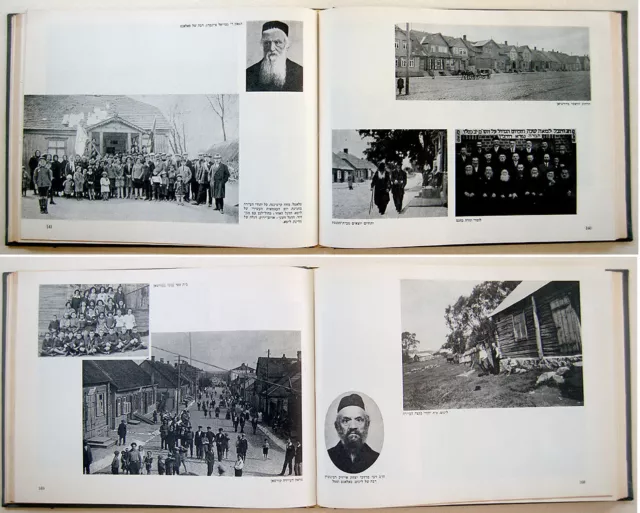
Jewish LITHUANIA Yizkor BOOK Judaica 360 PHOTOS ALBUM English HOLOCAUST Hebrew
$407.72 Buy It Now 18d 14h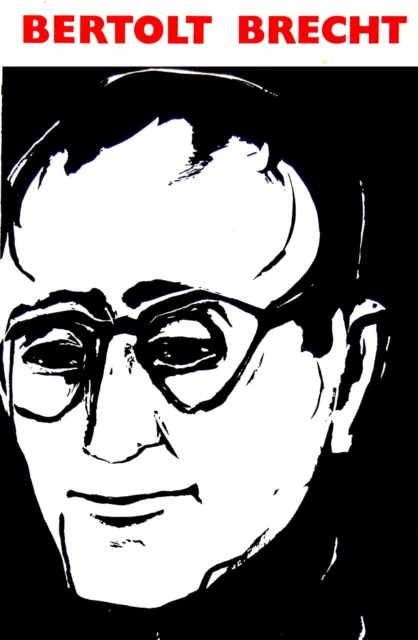
ART Lithographs BRECHT Poem HOLOCAUST BOOK Judaica JEWISH Israel HEBREW Children
$211.18 Buy It Now 8d 19h
KOVNO GHETTO Yizkor JEWISH BOOK Holocaust PHOTOS MAPS DOCUMENT Lithuania JUDAICA
$148.61 Buy It Now 8d 20h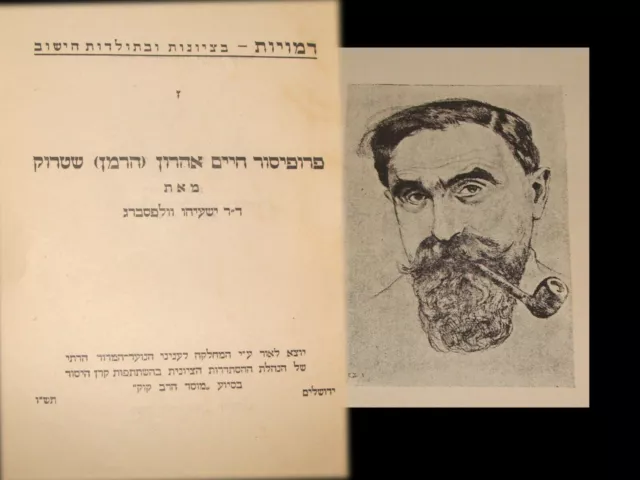
Jewish Judaica 1945 German HERMANN STRUCK Painter Art History Book Hebrew
$64.90 Buy It Now 14h 6m
1940 Palestine ISRAEL FRUITS Hebrew LITHOGRAPHS Judaica BOTANY Jewish RARE BOOK
$195.54 Buy It Now 4d 15h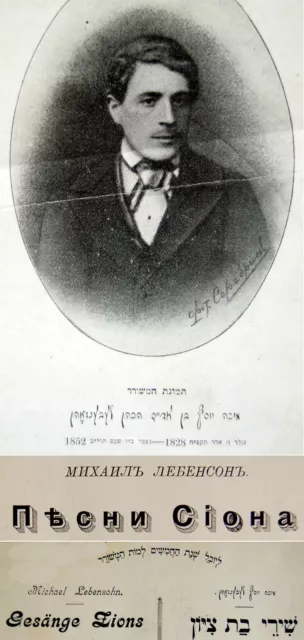
1902 Russian WILNA Jewish ZIONIST SONG POEM BOOK Judaica GESANGE ZIONS Hebrew
$158.09 Buy It Now 29d 16h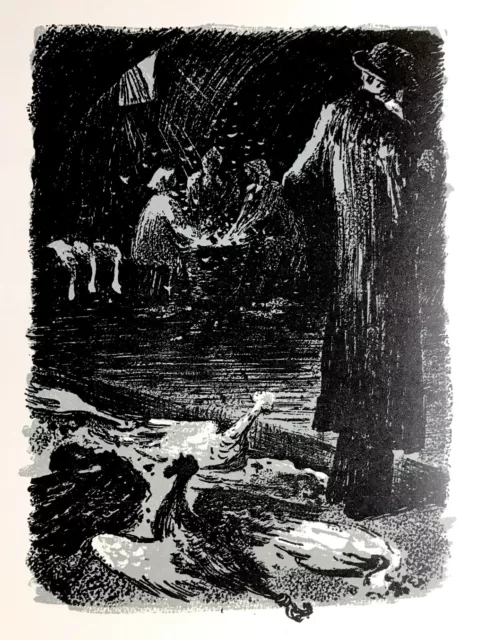
1952 Yiddish FABLES Fine ART BOOK Jewish LITHOGRAPHS Judaica LTD Number 347/500
$407.72 Buy It Now 30d 15h
2 Original LITHOGRAPHS Jewish YAACOV AGAM Kinetic FRENCH ART BOOK Judaica POP
$224.66 Buy It Now 11d 18h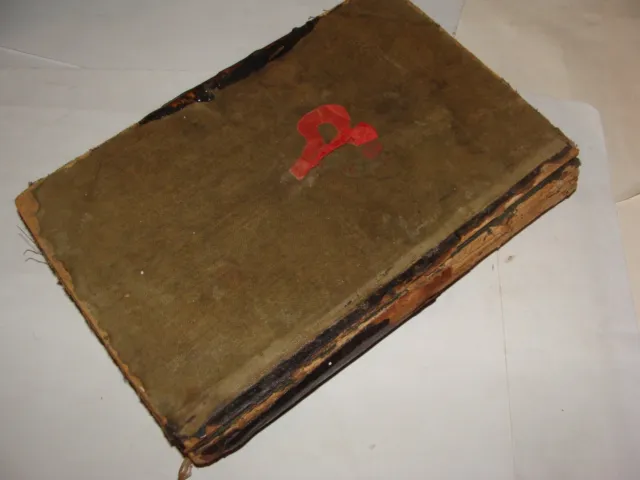
Jewish Judaica 1908 Lithuania Vilnius Book Siddur Selichot Prayer Hebrew
$64.90 Buy It Now 30d 13h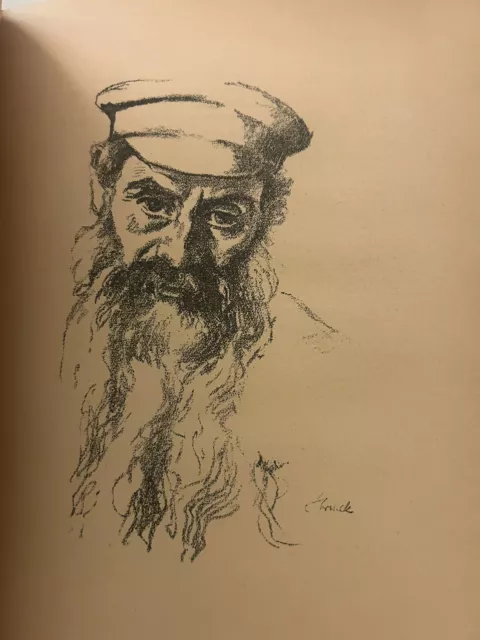
Jewish Face of Eastern Europe 1922 Hermann Struck 52 lithographs
$66.55 Buy It Now 20d 23h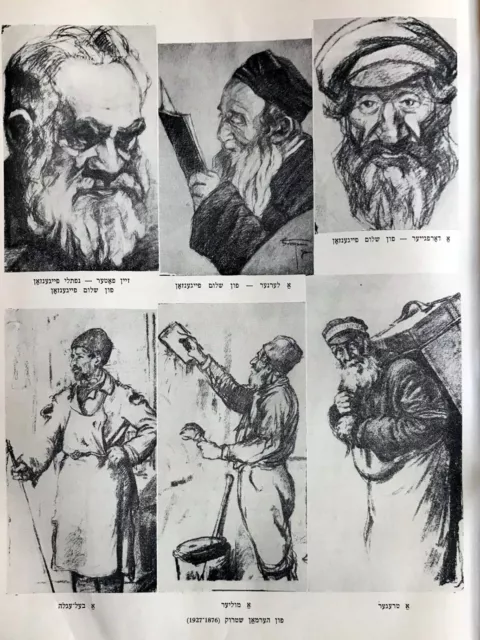
1951 Jewish LITHUANIA Yizkor BOOK Judaica PHOTOS Yiddish LITE HOLOCAUST Hebrew
$407.72 Buy It Now 20d 11h
Šiauliai (SHAVLI) LITHUANIA GHETTO POEMS BOOK JUDAICA JEWISH HOLOCAUST
$98.19 Buy It Now 24d 12h
1920 Original 8 LITHOGRAPHS Jewish ART BOOK Bezalel STEINHARDT Judaica FABLES
$367.61 Buy It Now 15d 16h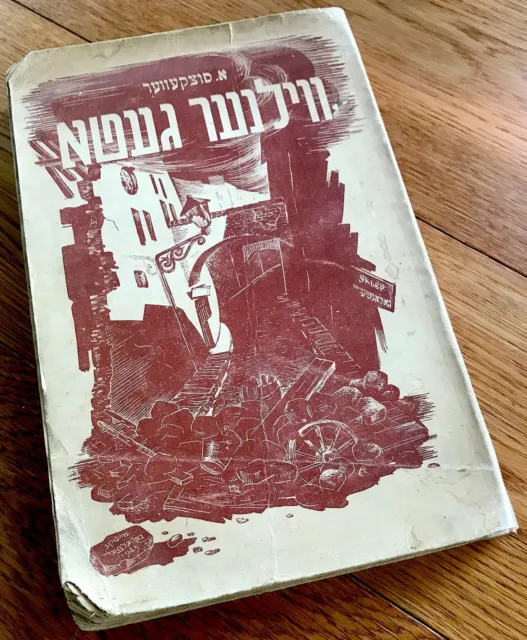
RARITY Holocaust 1946 YIDDISH BOOK Jewish SUTZKEVER Wilna GHETTO Judaica PHOTOS
$324.51 Buy It Now 23d 21h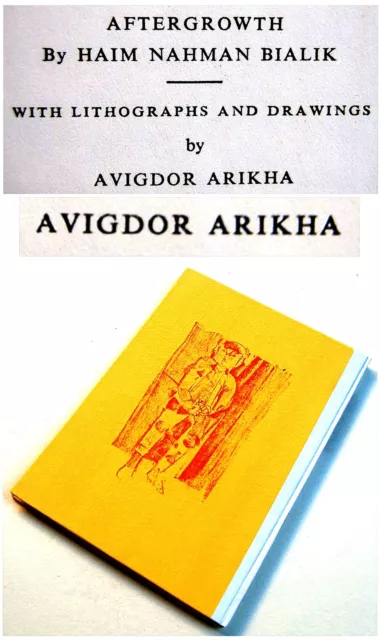
1955 Signed 15 LITHOGRAPHS Avigdor ARIKHA Jewish ART BOOK Hebrew BIALIK Israel
$224.66 Buy It Now 16d 13h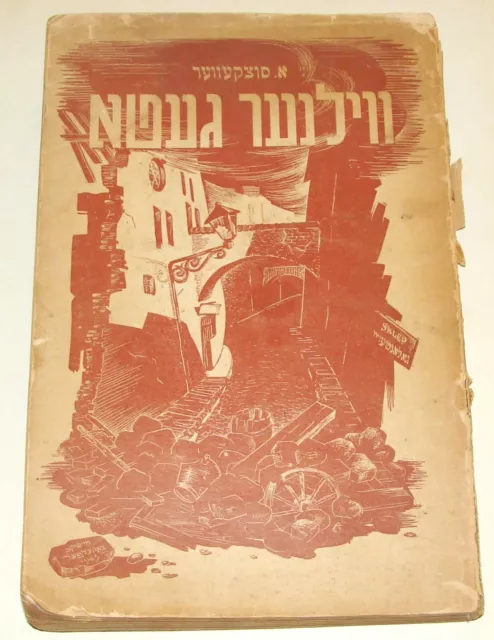
RARE Jewish Judaica WWII Lithuania Vilna Vilnius Ghetto Book Yiddish 1946
$208.02 Buy It Now 13d 12h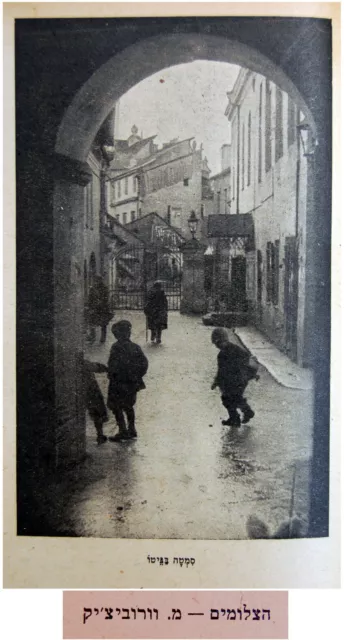
1943 Palestine MOI VER Vorobeichic PHOTO BOOK Jewish WILNA Bauhaus HEBREW Israel
$208.02 Buy It Now 24d 17h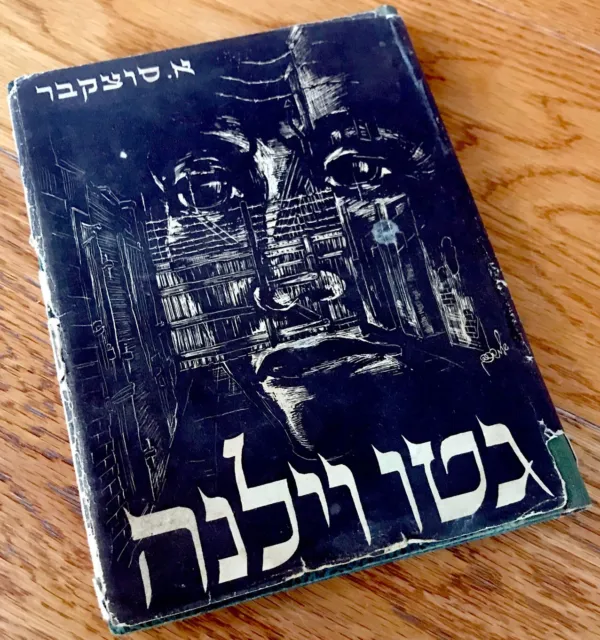
ISRAEL Holocaust 1946 HEBREW BOOK Jewish SUTZKEVER Wilna GHETTO Judaica PHOTOS
$191.38 Buy It Now 9d 14h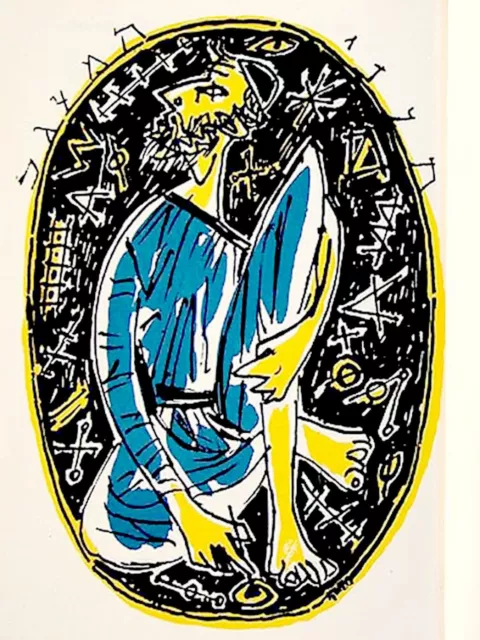
7 SIGNED original DADA Lithographs MARCEL JANCO ART Jewish BIBLE BOOK Judaica VR
$195.54 Buy It Now 5d 21h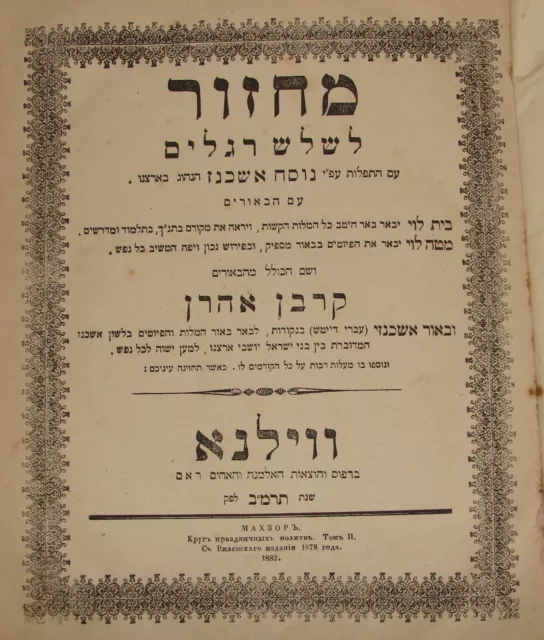
Jewish Judaica 1882 Lithuania Vilnius Rabbi Book מחזור Machzor Hebrew
$64.90 Buy It Now 5d 11h
1950 Hebrew JEWISH BOOK Chassidim JEWS Israel MAIMONIDES Rashi BESHT Wilna GAON
$114.83 Buy It Now 28d 1h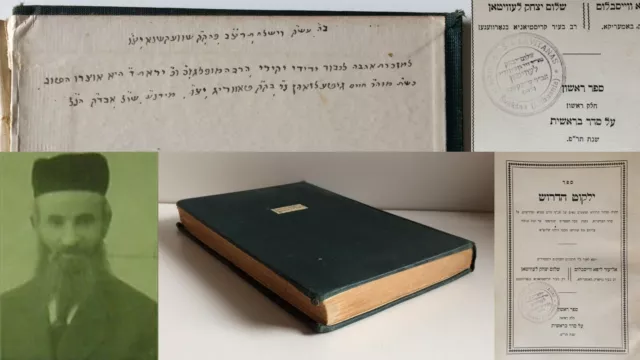
Judaica Book 1920 ילקוט הדרוש א / Stamp Rabbi SHALOM YITZHAK LEVITAN Lithuania
$166.42 Buy It Now 4d 22h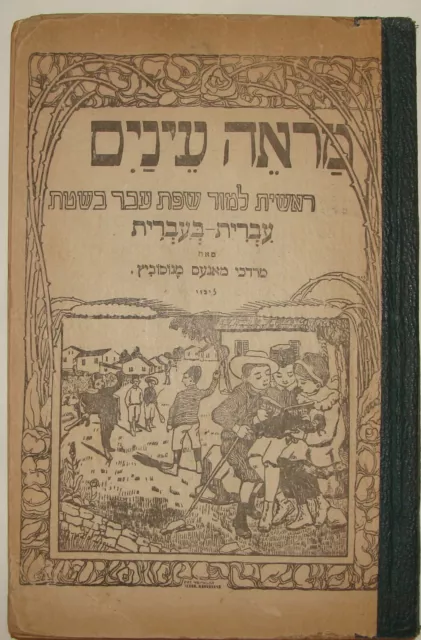
Jewish Judaica 1919 Lithuania Vilnius Book Hebrew Language Learn School Art
$64.90 Buy It Now 28d 14h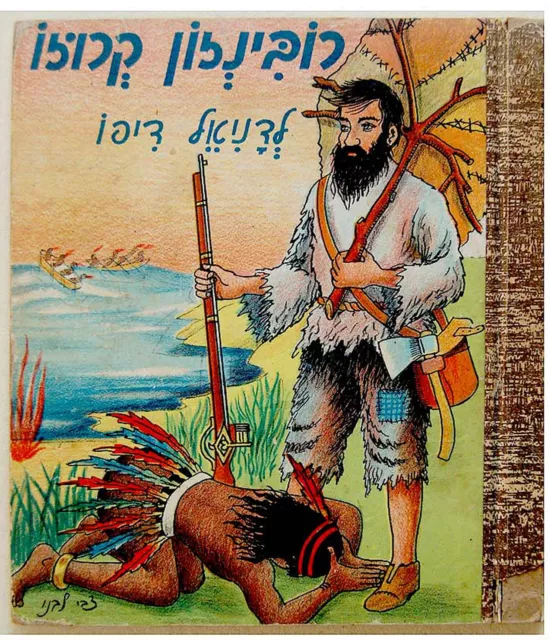
1956 Israel ROBINSON CRUSOE Hebrew DEFOE BOOK Judaica JEWISH Lithographs RARE
$124.81 Buy It Now 15d 16h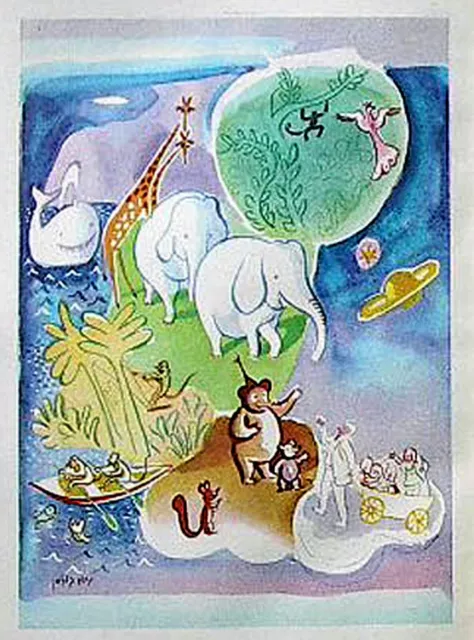
1953 Bezalel NAHUM GUTMAN Jewish CHILDREN BOOK Hebrew ISRAEL Judaica SHNEOUR
$123.57 Buy It Now 21h 36m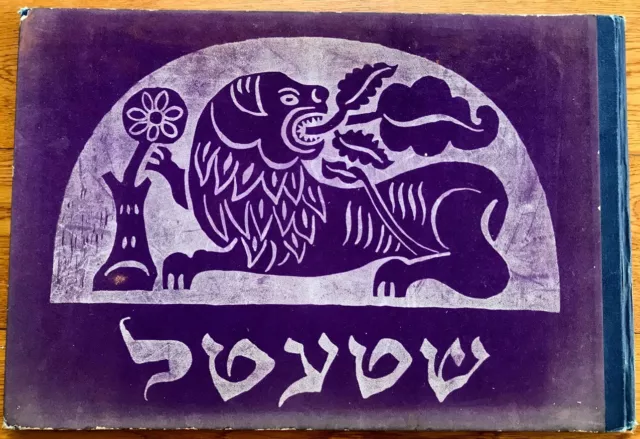
1923 Original FINE JEWISH YIDDISH Russian AVANT GARDE Book LITHOGRAPHS RYBACK
$4,916.79 Buy It Now 11d 17h
